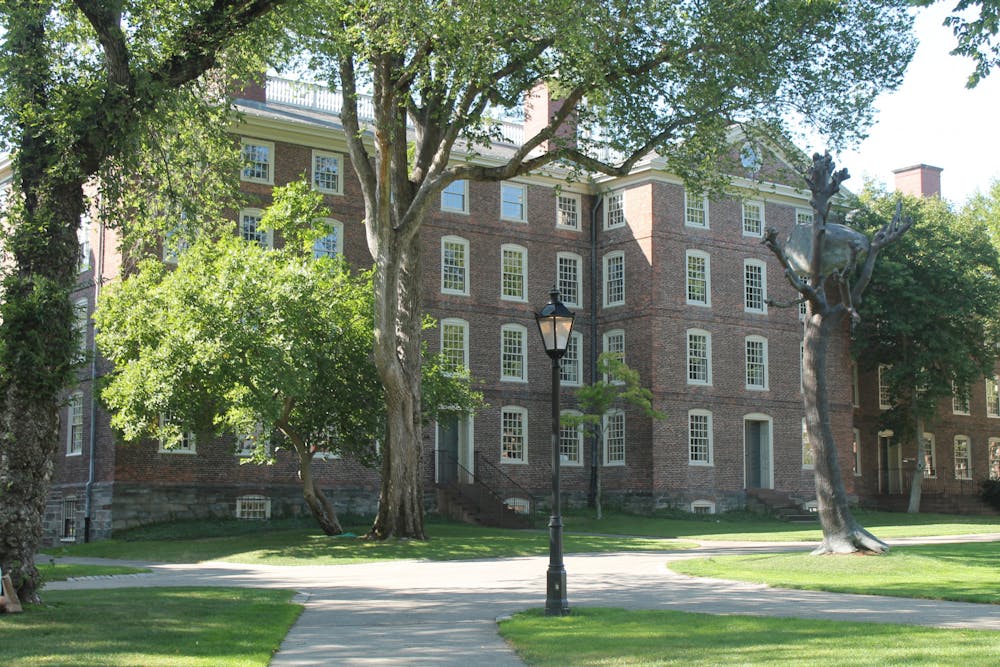The University’s tax-exempt status for its institutional properties dates back to its 1764 charter. In the last two decades, the University has signed two agreements to make voluntary monetary contributions to the city of Providence in lieu of property taxes.
In June 2003, Providence established a memorandum of understanding with four nonprofit institutions of higher education — Brown, Johnson and Wales University, Providence College and the Rhode Island School of Design — defining a schedule of annual voluntary payments to the city in lieu of property taxes. Brown’s annual voluntary payments through this agreement gradually increased from slightly above $1 million in fiscal year 2004 to slightly over $1.4 million in fiscal year 2023.
The 2003 MOU also included a series of augmented voluntary payments for properties taken off the tax rolls shortly before 2003, along with a schedule for transition payments for properties purchased by the colleges that would be removed from the commercial tax roll.
A few months before the 2003 MOU was signed, former Governor Donald Carcieri ’65 unveiled a budget that, if it passed, would have allowed Providence to require nonprofit institutions to either pay property taxes or make voluntary cash payments in lieu of property taxes.
The budget would have also increased Rhode Island’s payments in lieu of taxes, in which the state reimburses Providence for a fraction of the property tax value of tax-exempt nonprofits like Brown.
The provision was not included in the budget — all agreements between the University and Providence were voluntary.
In January 2012, former Providence Mayor Angel Taveras requested that the University pay an additional $5 million per year to the city, sparking a public battle over increasing voluntary payments.
As a result, a memorandum of agreement was established in April 2012 between the University and Taveras’s administration. The agreement included an 11-year payment schedule, with the University paying $3.9 million annually from 2012 to 2016 and $2 million annually from 2017 to 2022 in addition to the payments made under the 2003 MOU.
In addition to these two agreements, Brown pays property taxes on all commercial properties, amounting to a total of $30,610,212 between 2003 and 2023, The Herald previously reported.
The city also receives 27% of the estimated value of the University’s property taxes through Rhode Island’s general assembly payments in lieu of taxes, which generated $166,659,859 for Providence from 2003 to 2023. In fiscal year 2022, PILOT payments were $13,004,569.
The final payment of the 2012 MOA was made last year and the final payment of the 2003 MOU will be made by June 30 of this year, with the University set to pay a total of $4.5 million to the city this fiscal year.
Explore the data
The Herald tracked the University’s payments to Providence from fiscal year 2004 to fiscal year 2022 using data from the 2003 MOU and 2012 MOA, Mayor Brett Smiley’s office and University Spokesperson Brian Clark.
This data is imperfect, particularly regarding transition payment amounts, as the University and Providence define fiscal years differently. Additionally, fiscal year 2023 is still in progress. Still, the data remains representative of general trends in the University’s voluntary payments over time.
The 2003 MOU’s voluntary payment schedule included a series of payments that consistently increased annually. Augmented voluntary payments and transition payments vary by year depending on the University’s property acquisitions, and the 2012 MOA payments decreased from $3,900,000 to $2,000,000 starting in fiscal year 2017.
Transition payments have fluctuated over time: In the 2013 fiscal year, they dropped to $32,635.43 from $1.47 million the previous fiscal year — though the payments had hovered around $39,000 in the years before. Transition payments climbed again as the University continued acquiring property in the Jewelry District and the buildings that would eventually be demolished to become Sternlicht Commons.
The decrease in 2012 MOA payments in 2017 began another decrease in total voluntary payments, which have also declined since 2020 following a decrease in transition payments over this three-year period.
Brown’s continued impact
The University has a significant footprint in Providence — and amidst the city’s “challenging financial position” and struggling public schools, students, community members and the city are calling on the University to pay more to Providence.
As negotiations for a new agreement continue, the University has cited its significant economic impact outside of direct payments — and expects to unveil a college readiness program in the Providence Public School District this fall. In public comments, President Christina Paxson P’19 P’MD’20 has emphasized that the University expects to pay more in voluntary contributions — but it also hopes to create a “more collaborative and less transactional” relationship with the city.
According to a 2022 report by the Providence Finance Department and the Office of then-Mayor Jorge Elorza, the University would pay close to $50 million in FY2022 if all of its properties were taxed at the commercial rate.
In an April 18 campus talk, Providence Mayor Brett Smiley discussed ongoing negotiations between the city and nonprofit institutions regarding voluntary payments in lieu of taxes. While he noted that tax-exempt institutions “should be paying more,” Smiley also acknowledged institutions like Brown and RISD’s importance in the “vitality” of Providence and alternative contributions to the city, including the role of students volunteering in Providence public schools and a proposal from his office through which the city would receive 25% of payroll taxes from new jobs at tax-exempt institutions.

Rhea Rasquinha is a Metro editor covering development and infrastructure. She also serves as the co-chief of illustrations. She previously covered College Hill, Fox Point and the Jewelry District. Rhea is a senior from New York studying Biomedical Engineering.





